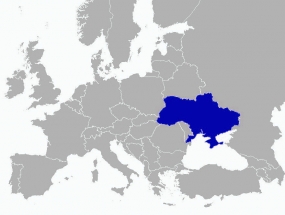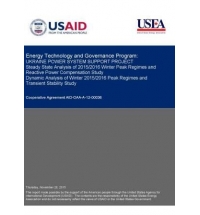The Ukraine Power System Support (UPSS) Project (Phase I - V)
client: USEA, USAID
type: Study (Transmission, Generation)
finishing date: November 2015
team: Milos Stojkovic – Project Manager, M. Ivanovic, M. Stojanovic
The Ukraine Power System Support (UPSS) Project was established in September 2014 to investigate the technical potential of the regional high voltage networks ability to support and strengthen transmission network reliability in Ukraine. The UPSS Project is sub-regional to the Black Sea Regional Transmission Planning Project (BSTP) and supports USAID’s goals of: strengthening the interconnections of the Ukrainian power system, enhancing energy security and optimizing the generation fleet. In the past year (September 2014 – November 2015), the project included the following activities:
- The first and second phases of the project included an emergency network study that assessed the high voltage transmission network’s stability in response to curtailed gas and coal fuelled electric power generation and an anticipated increase in demand for electricity resulting from consumers switching to electric resistance heating from municipally supplied heat produced by combined heat and power plants. A steady state load flow analysis of nine scenarios involving varying assumptions on fuel supply, electricity demand, and regional interconnections was conducted. The analysis yielded recommendations for a hierarchy of remedial actions to be taken by network dispatchers in response to voltage and frequency instability caused by lack of generation capacity and damage to the network in the conflict zone.
- The third phase of the project besides the dynamic stability aspects in general, included also analysis of summer max and min regimes in order to identify critical parts of transmission network taking into account annual equipment maintenance schedule.
- In parallel with previous, PSS/E Load Flow Training for Ukrenergo was conducted with the focus on Load Flow and NTC calculation methodology practiced within the ENTSO-E.
- This fourth phase of the UPSSP supported steady state analysis for the winter 2015-2016 maximum load regime to identify potential areas of network instability resulting the changes in network topology in the conflict zone of Eastern Ukraine and potential curtailments of coal and natural gas.
- In parallel with previous, PSS/E Dynamic Stability Training for Ukrenergo was conducted with the focus on stability aspects of the process of the Ukraine Power System connection to ENTSO-E.
- Within fifth phase of the UPSSP the World Bank has requested USAID provide it with an equivalent (with less detail) of the Ukrainian transmission network simulation model contained in the Black Sea Regional Transmission Planning Project (BSTP) regional simulation model. The equivalent model will be used as an input for a power generation optimization and market simulation study to be conducted by World Bank in support of future power sector loans to the Ukrainian Ministry of energy.


